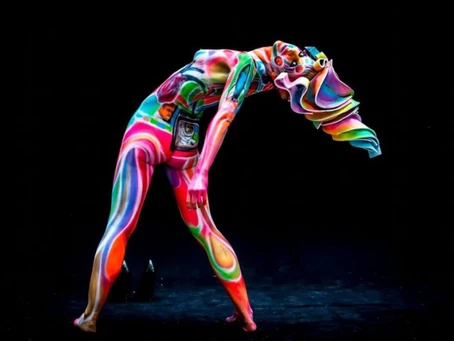Read Our Latest Blog Posts

Your body feels and express it when you can’t.
Communication parse is not only transmitted by oral means. In the world of counselling and psychotherapy verbal communication is of great use, so a relationship can be formed, therapeutic results can be reach but how much of the nonverbal communication is also relevant?
The body act as a source of communication in some therapies even cultures. It add a great value in understanding and expressing feelings, thoughts and emotions. The expression of emotions through our bodies is part of the process of connectivity. Dance for example liberate so much emotions and is a positive way to let go. In the therapy room is not different, nonverbal communication is there from the time we look at each other. Our body talks by movement, gestures, facial expressions, postures. As a therapist that is one of the language we work with. A therapeutic relationship can be build and change can be reached.
Our communication starts even before we are born. As we born the first form of communication to be observed is also the nonverbal cues that we make as a baby to get things from our caregivers attention.
Sounds, gestures, our emotions and needs are being translated though our bodies. As the development continues, the verbal communication is achieved, and words are learned. We want to try to express more of our feelings through words, it is the new discovery so body expression/ nonverbal start to get less attention but it doesn’t mean it is less relevant.
For a therapist some of the nonverbal communication play an important role in the client’s treatment. Clients might not be able to express their emotions through words, but they might be clearly translated by their bodies.
Facial expression is the only form of communication that do not vary dramatically among cultures. Happiness, sadness, anger, fear facial expression are similar throughout cultures.
The body hold your emotional journey. Our bodies often express what our minds cannot handle feeling, or knowing. Tension and muscle tidiness can be emotional blockage. For instance, holding tightens in the hamstrings might be related to the difficulty of letting go, they are connected to our ability to let go and trust. For example, irritability and inappropriate anger can impinge liver function, resulting in menstrual pain, headache, redness of the face and eyes, dizziness and dry mouth. People with depression and anxiety have usually report pain all over their bodies, even when there is no physical cause. Other pains that can be identity with your emotions. Neck pain is know to be where you hold issues of forgiveness or guilt towards yourself or others. You feel you are creating strong judgement about yourself. Try to make a list of all the things you love about yourself (and others). Or if you feel guilty about something, come clean.
The imagine below shows how emotions react in the body. It could indicate also the points where pain might be located as we are in that emotional state.

Our minds are capable of creating many types of physical symptoms in the body. For those whom have difficulties in acknowledge psychological or emotional problems the body will be an alternative path way to release emotions.
There is increasing evidence that psychological stress or trauma is associated with persistent pain, and likely predisposes to it. Reports of childhood adversities (e.g., divorce, family conflict, sexual abuse, physical abuse) and adulthood conflict and victimisation are elevated in people with various pain conditions, including migraine headaches interstitial cystitis or painful bladder irritable bowel syndrome , and fibromyalgia.
How can you free your body from the emotional blockage?
Be aware that if the pain isn’t physical it might be psychological.
Journaling without filter. Let it all go.
Get in touch with your emotions. Seek help of a therapist to help you gain access to your emotions.
Yoga is a good tool to release emotional blockage.
Learn some vagus nerves stimulation
Meditate
Add some breathing exercise into your routine.
Shake it off: Dance, jump, move your body.
Trapped emotions get in our way. It will hold you back to create the life you deserve. Give a voice to the emotions stuck in your body, it will shift your life into a positive way. Becoming aware of those emotions will bring you freedom. Sometimes, all it takes is a few small steps to start the healing process and move forward positively. Take that step today!
Reference:
https://www.verywellmind.com/emotions-in-traditional-chinese-medicine-88196
Asmundson GJG, Hadjistavropolous HD. Addressing shared vulnerability for comorbid PTSD and chronic pain: A cognitive-behavioral perspective. Cognitive and Behavioral Practice. 2006;13:8–16.
Benedetti F, Lanotte M, Lopiano L, Colloca L. When words are painful: Unraveling the mechanisms of the nocebo effect. Neuroscience. 2007;147:260–271.
Nummenmaa, L., Glerean, E., Hari, R. and Hietanen, J.K., 2014. Bodily maps of emotions. Proceedings of the National Academy of Sciences, 111(2), pp.646-651.
Featured Images: One of the leading bodypainting art festivals takes place in Austria (courtesy theguardian.com); The Practice of Mehndi.
© 2026 Tati Silva Private Psychotherapy - All Rights Reserved
Powered by Njord Star

